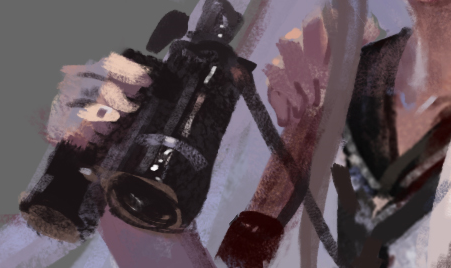STEC Archives, Print Document Division
Curator signature: Classified
Format: Message, Personal
Object: Correspondence to Harry S. Truman, from Walter B. Smith
Location (if known): Unknown
Time (if known): Unmarked.
Mr. President,
Please see attached comments in regards to recent proposal submitted by USNSTEC.
I. I concur with the proposal regarding establishing core research facilities as part of USNSTEC strategic objective.
II. To answer the feasibility question, yes. Operational costs are not of concern given the prospective nature of threat. However even with proposed enlargement of recruitment efforts OSI simply will not have enough personnel to realistically supply USNSTEC with requisite talent. Ms. Iowa’s weaponry borders that of fables and the difference between it and our current scientific understanding of it is akin to the difference between a stone axe and an aircraft carrier. Further understanding of basic scientific principles is necessary and a breakthrough may take decades if not longer.
I am overstepping my bounds by commenting on this, Mr. President, but if this threat is global in nature we may wish to contemplate discussing the matter with our friends. Loathe I am to make the recommendation, perhaps former friends, fairweather friends, and possibly foes across the Atlantic & Pacific may be worth taking into consideration as well.
III. I have already reassigned as many personnel within my agency as we can towards the appropriate objectives. I am concerned, however, that this is a futile endeavor. We are fundamentally limited by the ability of our operatives to obtain intel in a timely manner. If the ABYSSAL is empowered by destruction, then I fear we may already be too late by the time we obtain news from our ocean watchers. Ms. Iowa is faster than anything in our arsenal, but even she cannot hope to stem the tide of terror and chaos that would surely strike the globe.
IV. I concur with the strategic impetus of maintaining secrecy. The enemy is aware of our actions, but if it assumes that Ms. Iowa is acting independently as they expect, then it will act accordingly. It is my opinion that we play along for as long as possible. Ms. Iowa will be able to buy us time assuming their goal will be to strike her down. That is only sensible, and it is why (on a personal note) I remain firmly opposed to committing her to combat unless we have no choice in the matter.
V. For full details please see attached. In short, my proposal consists of minimizing the utilization and application of our conventional military forces in favor of adopting our unconventional strengths. As you are aware, Mr. President, while I am not opposed to current proposals of aerial recon via strategic bombers or CV air-groups as submitted, it will almost certainly result in diplomatic tensions. The Soviets aren’t blind and they will know we are looking for something, and they can use this as a pretext to carry out their own objectives and influence the globe.
Commercial flights are at an all-time high and will only increase in the coming decades. I can and will place a man on every flight coming in or out of the country if necessary, but with Ms. Iowa’s tiny friends even that may not be needed. In attached please find schematic for observational device prototype used to house our miniature allies on trans-oceanic flights. No one will bat an eye if a handful of wealthy customers submits an extra luggage for check-in, and our military can always fill in the rest of the gaps as necessary.
Signed,
Walter Bedell Smith
Office of the Director
Central Intelligence Agency
STEC Archives, Print Document Division
Curator signature: Classified
Format: Message, Personal
Object: Correspondence to Walter B. Smith, from Harry S. Truman
Location (if known): Unknown
Time (if known): Unmarked.
Dear Bedel,
Thank you for your excellent and timely commentary as always. I have been reading the proposals and like very much No.6 (the one involving aquatic critters). I have never been one for pets but the comforting thought of having a sea full of friendly eyes freely roaming about gives me much thought and optimism for the future.
You and our other co-conspirators have our unflinching support. Please proceed as proposed.
God bless.
Harry S. Truman
STEC Archives, Print Document Division
Curator signature: Classified
Format: Historical Artifact
Object: Internal Bulletin, United States Fish and Wildlife Service
Location (if known): Recovered from wall-board #14, USFWS, Woods Hole Station
Time (if known): Unmarked.
NOT TO BE CIRCULATED BEYOND THE OFFICE OF THE COMMISSION
The Director of the Central Intelligence Agency just asked for up to 200,000 aquatic creatures of various sizes, “preferably big enough to strap a moderately sized box on.”
TWO HUNDRED THOUSAND.
[Curator’s note: For this particular bulletin, “Two hundred thousand” appears to have been heavily scratched in with a very blunt pencil, jabbed repeatedly with small, sharp objects, and had been repeatedly underlined for emphasis.]
Boys, I repeat, this is no joke. You can see the executive order attached.
200,000. 200,000.
200,000.
2-0-0-0-0-0-0!!
[Curator’s note: penned in a different hand.]
W.t.f???
—-
STEC Archives, Print Document Division
Curator signature: Classified
Format: Message, Personal
Object: Correspondence to [Classified], from Walter B. Smith
Location (if known): Field Office #21, Central Intelligence Agency
Time (if known): Unmarked.
Mark,
Tell your staff to do what they can with the giant crabs. I am personally not averse to crab cakes for the next four years but I expect we can probably recoup operational costs if we just funnel it back to the civilian markets. In either case I’m giving him a call tomorrow. With any luck maybe he’ll finally see how nutty the whole idea is – we’ve had an unprecedented string of failures for the last four months!
And get rid of that damn Manta already.
Lucky for the USFWS, the CIA was never able to seriously make headway with proposal no. 6, where some enterprising young associate director proposed to place fairies in waterproof boxes and strap them to captured sea creatures as a “passive” search strategy against the abyssal fleet. While the proposal was deemed a complete failure, a substantial (some would say excessive) amount of insight was gained in aquatic biology and would eventually contribute to the foundation of organizations such as the NMMP.
Insofar as this particular tale ends, the ending was a rather mundane one. America settled on the conventional (albeit boring) strategy of applying recon sweeps, mostly from the Strategic Air Command. For several years, special units of USAF heavy bombers swept over the world’s oceans as civilian research ships – built in increasingly large quantities – prowled the world’s oceans. Only a handful of those involved knew that their missions of observation and discovery carried an additional purpose: to watch vigilantly for any signs of the Abyssal threat.
The early days of STEC may seem a little strange to our modern day sensibilities. On one hand, it built a solid foundation of theoretical and applied knowledge, and helped to create a deep pool of talent (as well as the capacity to create that talent) that America would find herself drawing upon again and again. Yet, at the same time, some of the most outrageous ideas also arose from that transitional time period. Perhaps the most important thing to keep in mind is that despite all of its failures, in the end, STEC was able to meet most of its strategic objectives. It, like the rest of humanity, did what humans do, which is to fail and fail until it finally finds success.



